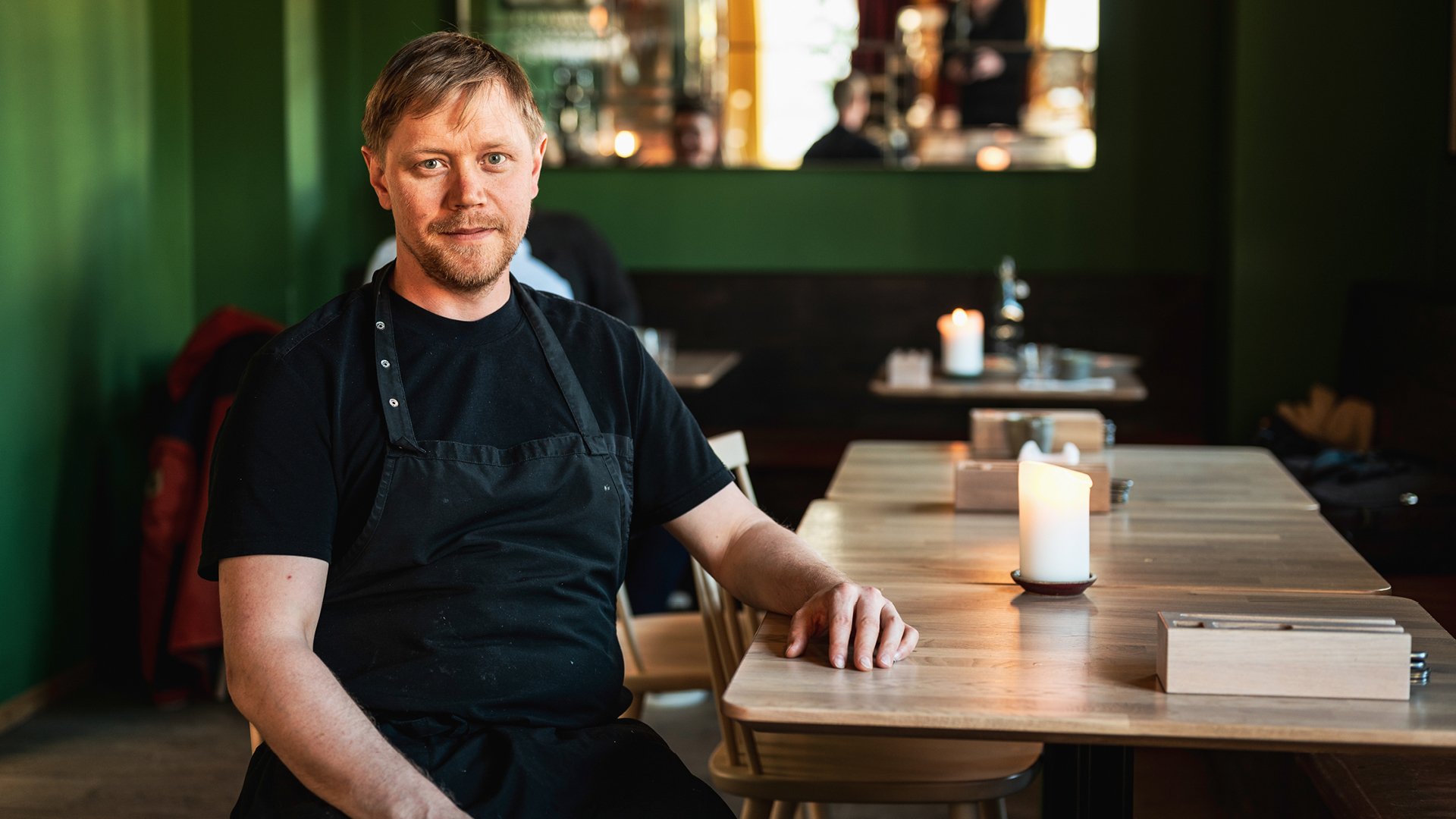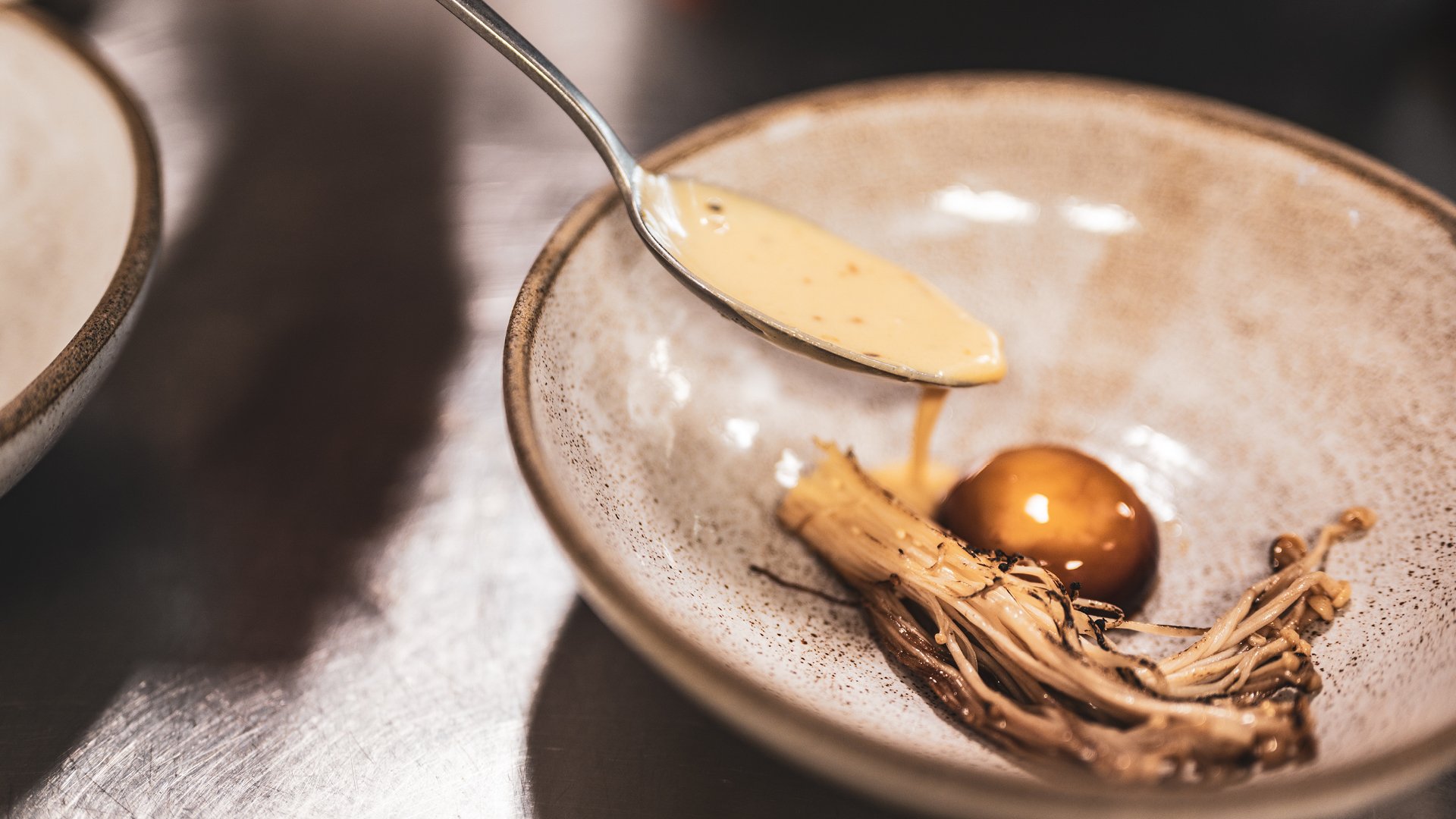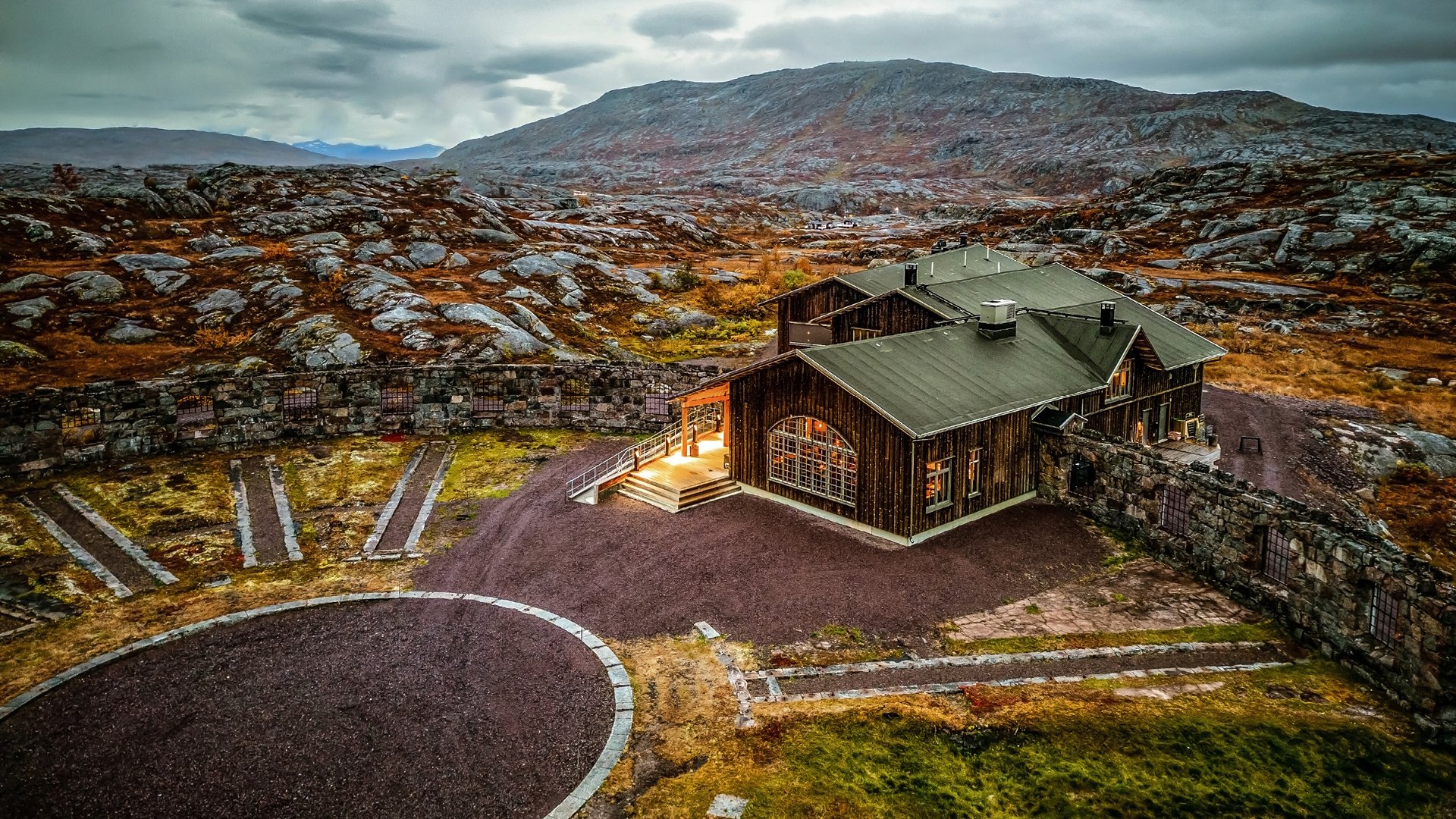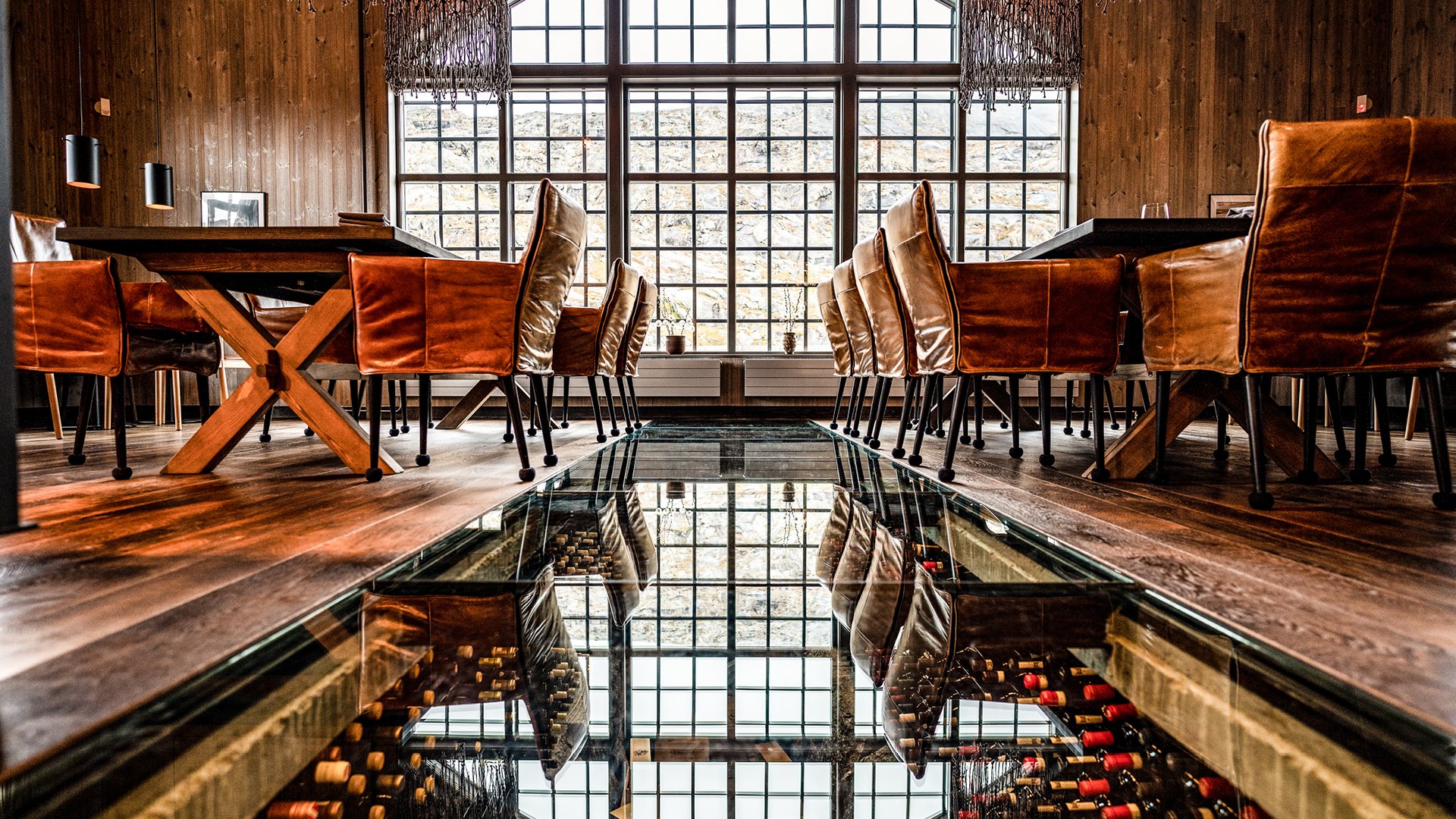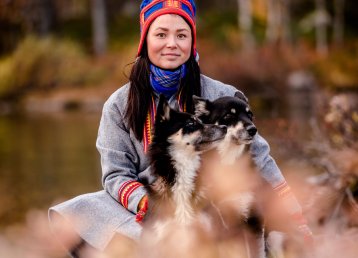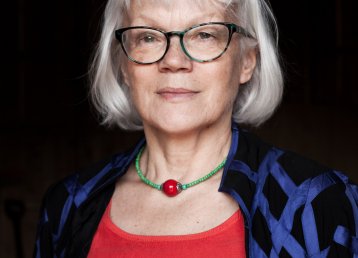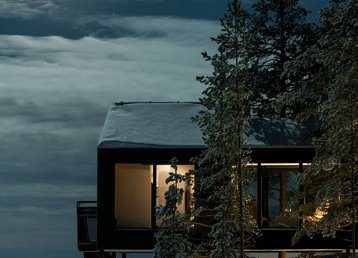Like coming home
Artists Tjåsa Gusfors and Ulrika Tallving pause from building a suite at Icehotel No. 33. Outside, it’s -20 degrees Celsius, a light westerly wind is blowing and early traces of the Northern Lights begin to fill the sky. But inside the suite it’s a mere minus four and, for Tjåsa and Ulrika, returning from their break, it’s like coming indoors.
“Yes, for me, this is like coming home,” says Tjåsa, laughing.
For more than 20 years Tjåsa has created rooms, suites and art at Icehotel. She speaks of her first meeting with the place; she was here with a theatre group, visiting Icehotel just to see an exhibition. She says that it was as if the ice was speaking to her. She knew she must return. The following year she built her first room. Since then, she has returned again and again. Artist Ulrika Tallving now lives in The Hague. Ulrika normally creates artwork that doesn’t melt, often sculpting in stone. She built her first suite at Icehotel as early as 2007. Working in ice, letting art emerge from a natural material that will transform itself over the season and eventually melt, is very special.
“But that’s what I like most about Icehotel in Jukkasjärvi. You literally ‘dig where you stand’. And next year, we’ll do it again.”
Also read
Icehotel - a frozen iconPowder first
Guide Michelin chef Niklas Ekstedt’s first encounter with Riksgränsen was on a snowboard, years ago. Back then, he barely cooked at all. And, well, food was whatever it took to keep him snowboarding. 25 years later, standing in a full-blown snowstorm, he is preparing one of his signature dishes for aprés ski, oysters flambadou. Not exactly Swedish Lapland, if not for the weather, of course. Niklas Ekstedt smiles. He’s pleased. But you probably guessed as much.
“Many of Sweden’s classic ingredients are to be found here in the north. Ingredients that we are proud of, also in the south. Löjrom and reindeer, moose and cloudberries and all those sorts of things. But for me personally, when I come up here, it’s the snow and snowboarding I love the most. So, you don’t need to ask me how good the food and ingredients are. Ask me how good the powder was today.”
Then he laughs and serves another oyster.
The snowboarder
Before breaking his back, all Niklas Ekstedt wanted was to be a pro snowboarder. In April 2021, Niklas made a performance at Niehku Mountain Villa in Riksgränsen, Sweden. A place and a mountain he has known for decades.
Under the stars
A few months later, at the closure of the summer season, outside Harads, stands another Guide Michelin chef, Nicolai Tram, from Knystaforsen in the southern county of Halland. Here, under the flaming Northern Lights, he is also serving up a flambadou dish. But, instead of beef tallow and oysters, Nicolai lets melted moose fat dribble over a grilled fillet of reindeer. The flavour is sensational.
“We’re like bears,” says Nicolai, continuing, “We really just go out into the forest and gorge on everything we can find.”
Nicolai Tram was one of eight Guide Michelin chefs guesting the event Stars du Nord, which took place in the woods outside Harads, not far from Treehotel and Arctic Bath. The idea behind Stars du Nord is to assemble some of the very best Nordic chefs for a cook-along beyond the ordinary, and the real stars are the ingredients.
“Swedish Lapland is central to the New Nordic cuisine"
— Caroline Thörnholm
“Sweden’s far north seemed like the obvious location for our second Stars du Nord,” explains founder Caroline Thörnholm. “The region is central to the New Nordic cuisine. Not only is this where the chefs gather and prepare the ingredients, it also has a lot to do with the techniques they use to prepare them. Cooking over an open fire, smoking, brining and pickling are also very much a part of the Nordic context.”
Many northerners have a freezer filled with berries, fish and meat – whether it be moose, reindeer or free-range lamb – yet they fail to comprehend what a bounty this is. They tend to see it as work; picking, butchering, sorting and packaging. It’s a never-ending job that follows the seasons. Like Sisyphus, rolling his boulder up the hill for all eternity, the northerners resign themselves to the fact that nature’s bounty simply must be harvested and the freezer must be filled.
Also read
The edible countryThe simple life
Kent Lindvall probably knew there was a fine forest in Harads before he built his Treehotel. Nowadays, Kent finds it hard to understand what good a forest is unless you can live among the treetops. Yngve Bergqvist certainly knew you could sleep in a snow cave without freezing to death, but that was hardly his reason for building Icehotel.
After doing stints at two prestigious eateries, Noma and Oaxen, it became quite obvious that Piteå chef Johan Eriksson understood a thing or two about the quality of food; however, that he would miss outsmarting wary trout and living the simple life in the north, only he could know. And that’s why he opted for a fine-dining bistro in Piteå and opened Centrum Krog, instead of pursuing an international career.
Failing to see the wonders around you, in the place you call home, is one thing. Feeling homesick is quite the opposite. And homesickness is a powerful force. The story of Moses, who must return home at all cost, parting the sea on his way; or Homer’s hardships on his journey back to his beloved Penelope, after the war, are myths that speak tellingly of what homesickness can mean. Sometimes, one simply must return home again, even if building a restaurant, a hotel or an art gallery has to be part of the equation.
As poet and clergyman Alexander Pope wrote, to Richard Boyle, 3rd Earl of Burlington, in his Epistle IV:
To build, to plant, whatever you intend, To rear the column, or the arch to bend,
To swell the terrace, or to sink the grot; In all, let Nature never be forgot.
But treat the goddess like a modest fair, Nor overdress, nor leave her wholly bare;
Let not each beauty ev’rywhere be spied, Where half the skill is decently to hide.
He gains all points, who pleasingly confounds, Surprises, varies, and conceals the bounds.
Consult the genius of the place in all.
Chef at heart
At the age of 19, Johan Eriksson moved to Copenhagen to work as a chef at Noma. Ten years later, after he’d also worked at two-star Michelin restaurant Oaxen in Stockholm as head chef, he moved back home to his beloved Piteå in northern Sweden. Just to be able to go flyfishing in Swedish Lapland — when ever he wanted.
The core
Many verses of Alexander Pope’s epistle have become famous, but the line “consult the genius of the place in all” stands out. Every place has its beauty, its intrinsic quality, its genius. Actually, it’s not so much about sustainability or preservation; it really has to do with letting the character of the place, its own true nature, come to the core. When Gunhild Stensmyr moved home to Risudden, in Tornedalen, it was with that feeling in mind. She wanted to bring some life back to the village with her Arthotel project, which can be likened to an Italian Albergho Diffuso. But then, the idea to create Konsthallen just fell into her lap.
"Every place has its beauty, its intrinsic quality, its genius"
“When I stand down here on the meadow, looking out over the Torne River across to Finland, I feel the same sort of sensation as I do when standing outside Louisiana, in Denmark, gazing over the Öresund Strait at Sweden. We need an art gallery in the north. Not only should we who live in the north also have access to art, but we should also be able to exhibit all of the fantastic art that we have here but might be a bit neglected. Why are Nils Nilsson Skum’s paintings hanging in the Nationalmuseum in Stockholm, or in Göteborgs konstmuseum, but not in a Konsthall in the place where he actually worked?”
Also read
Arthotel TornedalenA bit more “wow”
Israeli Asaf Kliger is a photographer and artist with an uncanny ability to enable the ice at Icehotel to speak to us through his images. The first time he landed in Kiruna and made his way from the aircraft to the arrivals hall he thought he would freeze to death, although the walk was a mere 25 metres. Now he loves the cold and light of the hotel, which this season as well has been built near the shore of the Torne River.
“With my photo art I want to give the world a bit more ‘wow’. That’s my style; more colour and more life in the images.”
Asaf’s career began with studies at the art academy in Jerusalem before he found his niche in travel and sports photography. While on a trip in Asia he met Josefin, who worked at Icehotel, and he decided to tag along. When asked about his first impression of Icehotel, he is quick to respond, “It was cold.”
But after the initial shock, Asaf felt as if he was in a fairytale world. Meeting Icehotel was the best thing that had happened in his career. He runs galleries in Lund and Jukkasjärvi, but his images are exhibited all over the world. You’ll see them at Arlanda, on your way to the F gates in Terminal 5, or even on one of this year’s Swedish postage stamps.
“The whole idea behind Icehotel, the fact that it is reborn each year, makes it a wild playground for artists. Interacting with others who set no boundaries, even in snow and ice, has helped me enormously.”
The dream catcher
Photographer Asaf Kliger wants to bring more “wow” to the world. Whether Asafhas been shooting at the Olympic Games or a wedding in the Arctic, he will take his work to the limit. At the original Icehotel in Jukkasjärvi, Swedish Lapland, he has found a place that accommodates all his needs. This cool hotel in northern Sweden is the perfect place for getting married and capturing the best winter wedding photos.
Dreams come true
Niehku Mountain Villa has been described by American journalist Leslie Anthony as the world’s best heli-ski lodge. But for alpine guide and hotel owner Johan Jossi Lindblom, the thought that such a place could ever exist never occurred when he was slogging it out as a ski patrol at the nearby resort Riksgränsen. It took several years abroad, and a few clients and investors, who remarked, “You don’t realize what you have here.”
Niehku is the North Sámi word for dream. Of course, Jossi had dreamt of building something special, of giving something back to the place and the environment that had in so many ways shaped him, but he had no idea that it would become one of the world’s coolest ski-resort hotels. Erik Nissen Johansen, designer and owner of design agency Stylt Trampoli, understood this well when he and his colleagues decided to enter Niehku in UNESCO’s Prix Versailles, a sort of Oscars for interior design architects.
“What makes this project special is that its point of departure is in a human need, something that drives a particular group of visitors – those who come here to ski or hike. That has enabled the creation of a five-star product. Something we in Scandinavia have very few of. For many, the meaning of the term ‘luxury’ has changed radically over the past 30 years. Instead of collecting Rolex watches and Ferraris, we gather poetic experiences that we can recollect and share around the dinner table. It’s beautiful.”
"We really have achieved a harmony between interior and exterior. In principal, that’s what architecture is all about.”
— Bjarke Ingels
Erik Nissen Johansen is sitting by the fireplace, savouring a pinot noir. He and his friends at Stylt Trampoli have won UNESCO’s Prix Versailles twice. They are the only team to have done so. And the interior of Niekhu Mountain Villa was one of their winning entries.
“The entire building has been built solely to meet the needs of quality consious outdoor-leisure enthusiasts. At the same time, it can escape no one’s notice that the heritage of Ofotenbanan, the railway line, has been carefully preserved. The instant you step through the door you feel an immediate sense of calm and contentment. I hadn’t been here in three years but, upon entering, the smiles on the faces of the staff and the welcoming sound of a crackling fire seemed to share a common DNA.”
Also read
Living in a dreamWhat it’s all about
Bjarke Ingels has been called a genius, and justifiably so. Born in Copenhagen in 1974, he began university studies in architecture because he hoped it would make him a better cartoonist, which had always been his dream career. But architecture grabbed hold of him and he furthered his studies in Barcelona, at Técnica Superior de Arquitectura. After working in, among other firms, OMA in Rotterdam and PLOT, the latter of which he co-founded, he started Bjarke Ingels Group in 2005.
BIG would become a major success. The firm now has offices in Copenhagen, New York and Barcelona. The Biosphere room at Treehotel was the first project to be realized by his Barcelona office. From concept, to sketch to a unique hotel room surronded by 350 birdhouses amid the treetops.
“I am pleased by how we managed to achieve the spherical effect, despite the fact that the actual room is a cube; all of the birdhouses on the exterior create the impression that the interior is a sphere. And we really have achieved a harmony between interior and exterior. In principal, that’s what architecture is all about.”
"Saying yes for your own gain is easy; but saying yes for the betterment of society is more demanding"
Four years after starting BIG, Bjarke Ingels wrote his ‘yes is more’ manifesto. When asked if it is a reflection of his own personality, he explains that it has more to do with an attitude. It is important that we embrace the bigger context. Saying yes for your own gain is easy; but saying yes for the betterment of society, the ‘more’ in the manifesto, is more demanding. As Bjarke sees it, architecture has largely become stuck in two parallel ruts. On the one hand; avant-garde, with deranged, radical, oppositional architecture, which can at best be described as an oddity; on the other hand, traditional functionalism, which produces nothing more than what is expected – a rather boring box.
“These two streams have dominated architecture, but for us at BIG, the interesting thing has been to see what happens when the two meet and interact. We’re drawn into the no man’s land where they should overlap.”
Bjarke leans back in an armchair with a cup of coffee. A little bird flies up behind him and lands on one of the nesting boxes. It’s as if it has come to check the neighbourhood, to see who has moved into the biggest of the birdhouses today.
“Oh, look at that little bird.”





















